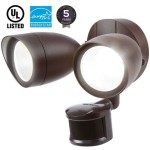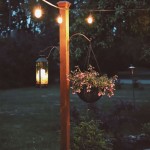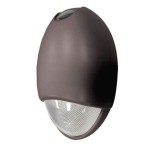Essential Aspects of Solar Outdoor Lights: How Do They Work?
Solar outdoor lights have gained immense popularity as a sustainable and cost-effective lighting solution. These lights harness the sun's energy to provide illumination without the need for electrical wiring or ongoing energy consumption. Understanding the inner workings of solar outdoor lights is crucial for choosing the right lights and maximizing their performance.
1. Solar Panel: The Energy Source
The core component of a solar outdoor light is its solar panel. This panel consists of photovoltaic cells that convert sunlight into electrical energy. The efficiency of the solar panel determines how much energy is generated and stored in the battery.
2. Battery: Energy Storage and Power Supply
The battery serves as the energy reservoir for solar lights. It stores the electrical energy generated by the solar panel during daylight hours. At night, the battery powers the light fixtures, providing illumination.
3. Photocell Sensor: Light Detection and Control
A photocell sensor is an integral part of solar outdoor lights. It detects the ambient light level and automatically turns the lights on at dusk and off at dawn. This ensures that the lights operate only when needed, conserving battery life.
4. Light Emitting Diodes (LEDs): Energy-Efficient Illumination
Modern solar outdoor lights predominantly use LEDs as their light source. LEDs are highly efficient and provide bright, focused illumination while consuming minimal energy. They also offer a long lifespan, further reducing maintenance and replacement costs.
5. Dusk-to-Dawn Operation and Battery Capacity
The run time of solar outdoor lights varies depending on the size and capacity of the battery. Larger batteries provide longer illumination hours. It is essential to consider the desired illumination time when selecting a solar light to ensure it meets your specific needs.
6. Weather Resistance and Durability
Solar outdoor lights are designed to withstand the elements. They are typically made from durable materials such as stainless steel or aluminum that can withstand harsh weather conditions, including rain, snow, and extreme temperatures.
7. Cost-Effectiveness and Environmental Sustainability
Solar outdoor lights are a cost-effective lighting solution in the long run. They eliminate the need for ongoing electricity costs and require minimal maintenance. Moreover, they contribute to environmental sustainability by reducing carbon emissions associated with traditional lighting.
Conclusion
Understanding the essential components and working principles of solar outdoor lights empowers homeowners to make informed choices when selecting and using these energy-efficient lighting solutions. By considering the solar panel efficiency, battery capacity, photocell sensor, LEDs, dusk-to-dawn operation, weather resistance, and cost-effectiveness, you can find the ideal solar outdoor lights to illuminate your outdoor spaces while reducing your energy consumption and environmental impact.

How Do Outdoor Solar Street Lights Work Exc

Do Solar Lights Work In The Shade Or Need Direct Sunlight Conserve Energy Future
How Solar Yard Lights Work Howstuffworks

Solar Lights Distance And Spacing Tips Living By Homeserve

How Do Solar Lights Work Les Jardins Official Site

Installing Solar Garden Lights Learn About Powered
The Real Truth About Solar Lights Lights4fun Co

The 3 Best Smart Outdoor Lights For Backyards Of 2024 Reviews By Wirecutter

Top Tips For Your Garden Solar Light Batteries Buy A Battery

How Solar Lights Work A Simple Guide
Related Posts







